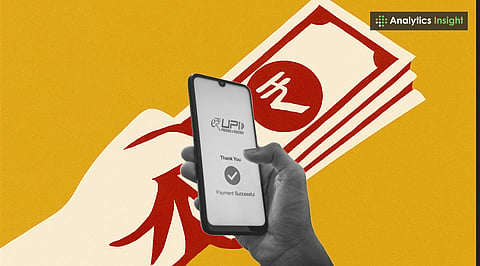

Digital transactions are accelerating India’s GDP by facilitating faster and more transparent trade.
Digital payments empower both rural and urban users, enhancing accessibility.
The rise of UPI, fintech apps, and AI-driven solutions is redefining India’s financial landscape.
India's increasing dependence on digital payments is poised to change its economy by the year 2025. Services like UPI, Paytm, Google Pay, and PhonePe have made it easier, quicker, and safer for users across the country to make transactions.
This shift has reduced the country's reliance on cash and increased financial inclusion across the nation. This change has also improved consumer confidence and trust by promoting safe, secure, and traceable transactions.
The transition did not happen overnight. The 2016 demonetisation initiative marked the beginning of the UPI revolution. Today, almost every shopkeeper and street vendor accepts digital payments. With over 400 million transactions daily, the system has made economic activity more efficient and resilient.
Also Read: UPI 2.0: India’s Payment Revolution Goes Biometric, Voice-Activated, and Wearable
Digital payments are an essential component of India's economy today. They help lower operational costs, streamline financial processes, and facilitate quicker transfers of funds. Every time you access UPI or a digital wallet, you are contributing to the economy's journey toward greater transparency.
With less cash in circulation, tax compliance has improved, illegal activities have decreased, and the government can manage public finances more efficiently. Essentially, it's contributing to India's GDP.
One of the most notable benefits is the widespread inclusion of digital payments in the financial system. Millions who didn't previously have bank accounts are now paying bills, saving, and conducting transactions online.
Aadhaar-linked accounts and phone banking are bringing rural India into the fold. Even small shops and farmers are using QR codes to receive instant payments. It means everyone gets a chance to benefit, not just city folks.
Digital payment systems are changing how small businesses and startups conduct their operations. Overall payment platforms, like Paytm for Business and Google Pay for Merchants, allow local vendors to easily accept online payments.
For startups, digital payments mean that customers can pay with much faster access to funds, reduced revenue loss, and cheaper methods of payment, among other benefits. With less paperwork and waiting time, businesses can focus on brainstorming their next product or service.
It enables smaller enterprises to make the playing field more even for competition, thus allowing them to sell products and services in national and sometimes international markets.
UPI remains the leading platform in India’s digital payments ecosystem, facilitating over 12 billion transactions each month. It stands as one of the most successful financial innovations globally. By 2025, UPI will be operating in other countries, such as Singapore and France.
UPI Lite and Credit on UPI make payments incredibly easy, allowing you to pay instantly, even when you're offline. India's really showing the world how it's done with this payment system.
The government continues to promote a cashless economy through initiatives such as Digital India and RBI-led regulations, which have strengthened public trust in digital payments.
Additionally, with Zero MDR, stores are exempt from paying extra fees when customers pay digitally. The government and companies working together have built a solid system.
Despite the progress, several challenges remain. Topics such as online threats, scams, and inadequate internet access in rural areas require attention.
Also Read: PayPal Partners with UPI to Simplify Cross-Border Payments Payments
Digital payments mark a key achievement in India's economic development. They are changing how individuals handle their cash, savings, and investments while breaking down barricades of financial inequity.
Given the innovation, security, and government endorsement associated with it, digital payments are likely to reinforce India's economy further. India is not adapting to technology; instead, it is establishing systemic standards for the world.
1. How are digital payments helping India’s economy in 2025?
Digital payments enhance transparency, expedite transactions, and increase overall economic efficiency.
2. What is the role of UPI in India’s digital growth?
UPI enables instant, low-cost payments, making digital transactions accessible to everyone across India.
3. How do digital payments support small businesses?
They reduce cash handling, simplify transactions, and help small businesses grow faster with minimal setup costs.
4. What challenges do digital payments face in India?
Cybersecurity risks, internet issues, and low digital literacy remain key challenges that need continuous improvement.
5. How does the government promote digital payments?
Through initiatives like Digital India, UPI expansion, and zero-fee policies for small merchants to boost adoption.
